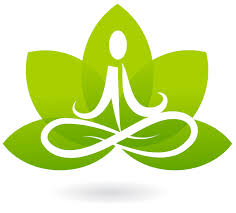
Yoga is a beginner friendly exercise that will give you a sharp mind, positive attitude, and calm demeanor. Don’t feel self-conscious about it, because no one was flexible to start with (that takes practice!). If you’re not already taking a class, I bet you’ll want to after you read these 12 things about yoga.
Surprising Benefits
1. Yoga is a break from your stressful day.
We are surrounded by stressful expectations placed on you by your partner, parent, superior, society, or whoever. No matter how upset these things might make you, remember that you can’t do anything about them. Practicing yoga can help you become a less stressed, present-focused person.
2. Yoga is a remedy for anxiety and depression.
We live in an upsetting world. That devastating break-up that left you emotionally drained. A move to a new town where you don’t know anybody. The sadness that follows losing a family member, friend, or pet. No matter how sad you might feel, remember that you deserve to be happy. Practicing yoga can help you improve your mood and mental functioning.
3. Yoga improves your balance and breathing pattern.
We are chained to our desks. That hunched over back from hours of sitting. A closed-off appearance that expresses a lack of esteem. The panic that follows short, rushed breathing. No matter how self-conscious you might feel now, remember that confidence is a skill that you can learn. Practicing yoga can help you develop balance and a calm breathing pattern.
4. Yoga boosts concentration and productivity.
We live in a distracting world. That feeling of dread that comes when a deadline is drawing near. A list of stuff to do that grows and grows. The loud noisy of the phone that never stops ringing. No matter how busy you might feel, remember that a state of overwhelm could be a signal that you are over-committed or impatient. Practicing yoga can help you focus ongetting stuff done.
Common Misconceptions
5. Yoga requires you to stretch yourself into a pretzel.
You don’t have to be an acrobat to go to yoga class. I couldn’t reach my ankles in a forward fold the first time I tried it. My hips were so tight that I needed to tools like blocks for the bent-over poses. I wasn’t very graceful, so I practiced the balance poses at home with my hand placed on a wall. It doesn’t matter where you are starting from. The important thing is where you are going to.
6. Yoga is a religious practice that demands you to say “om.”
Yoga does have spiritual roots, but that doesn’t mean have to chant to spirit gods or anything like that. Most yoga classes in commercial gyms will focus on athletic poses, while yoga studios might offer classes that include meditation. If you want a class that is more (or less) mindful, just ask your gym or yoga studio for details before signing up.
7. Yoga classes are all created equally.
There are more varieties of yoga than I could possibly list here. Hot yoga classes use humid conditions to encourage flexibility. Power yoga classes use a wide variety of athletic poses to keep things interesting. There are yoga classes for special populations like seniors, children, and expecting mothers. If you can’t find something you like, you’re not looking hard enough.
8. Yoga is the only exercise you need to do.
Yoga is a great way to improve your mind and body, but a balanced fitness routine would also include cardio and strength training. You could improve your heart health by walking your dog at the park, running a few blocks in your neighborhood, or going on a hike. Develop your strength by lifting weights, joining a boot-camp class, or doing push-ups during commercial breaks (hands on a wall or counter if needed).
9. Perform the sunrise salutation every morning.
Sunrise salutations are a feature of vinyasa (flow) yoga. The previous link includes a routine you could do in ten minutes to begin your day feeling relaxed. The video below includes modifications that will make the same routine doable for people of all shapes and sizes.
Source: ideal digest











